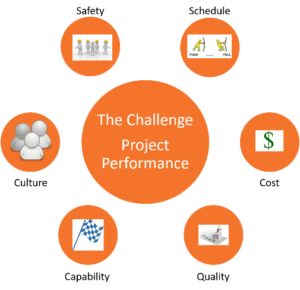Lean/IPD Hold the Key to Rapid Expansin for Manufacturers
Greg Fox
Miller Valentine Construction
It’s too early to definitively state how the coronavirus pandemic will reshape the U.S. economy over the long term. But one bright spot could be an upswing in American manufacturing. After the pandemic exposed the fragility of international supply chains, the potential for reshoring manufacturing to the U.S. is becoming a very real possibility.
 For manufacturers, this could create opportunities to expand, and fast. Owners and developers who want to rapidly scale up for less cost will need to look beyond traditional construction methods. They should instead invest in collaborative contracting using lean principles and integrated project delivery (IPD) methods.
For manufacturers, this could create opportunities to expand, and fast. Owners and developers who want to rapidly scale up for less cost will need to look beyond traditional construction methods. They should instead invest in collaborative contracting using lean principles and integrated project delivery (IPD) methods.
Lean/IPD projects perform better than traditional projects across every measure of success. On average, they cost less, are completed faster, are of higher quality, and deliver a better overall experience for owners and the project trade partners. A recent analysis by McKinsey & Company released in January 2020 found a 15 to 20 percent improvement in cost and schedule performance on eight projects that used Lean/IPD methods.
Selecting the Right Team
One of the hallmarks of a Lean/IPD project is collaboration. Key stakeholders—typically the owner, architect, trade partners, builders, suppliers, engineers, and major equipment manufacturers—are brought to the table at project inception. The team pools their respective expertise and knowledge to design, engineer, and construct a project that supports the owner’s goals within an agreed-to budget.
For this to work, Lean/IPD projects require greater collaboration, transparency, and trust than traditional delivery methods. Naturally, not all companies are well-suited for this model. As a result, relevant experience and technical capabilities aren’t the only qualifiers that owners need to assess when forming their team. Other factors should include:
- Experience with Lean/IPD thinking and logic
- A corporate culture that emphasizes collaboration as well as continuous learning and improvement
- A willingness to embrace open-book accounting and other transparency measures
- Evidence of innovation and collaboration within their company and industry
- A demonstrated ability to accurately forecast hours and costs
- An emphasis on accountability
- Perhaps the most important factor—and the hardest to define in an RFP—is team chemistry. You need to trust your partners, and they need to trust each other. Trust is required to foster open communication, collective decision-making, and innovation.
For that reason, owners need to shift from traditional procurement methods that emphasize standardization to a more hands-on approach, including interviewing the actual team members who will work on the project. Only then can they assess which partners can best work together to address the needs, challenges, and risks of the project.
Record Attendance as 600 Economic Development Leaders Gather in Akron for the 2025 OEDA Summit
For Immediate Release Record Attendance as 600 Economic Development Leaders Gather in Akron for the 2025 OEDA Summit Nation's largest state-level economic development conference marks 45 years of advancing Ohio's growth and collaboration. AKRON, OHIO – Thursday,...
OEDA Board Adopts Policy Platform, Affirms ED for All, Works on Strategic Plan
For Immediate Release OEDA Board participates in strategic planning led by Camoin Associates. Comprehensive platform replaces 2016 Agenda for Ohio, first strategic plan since 2015 AKRON, OHIO – TUESDAY, October 14, 2025 – The Ohio Economic Development Association...
OEDA Quarterly Report – Q2 2025
April 1 – June 30, 2025 From Expansion to Execution: OEDA’s Q2 2025 in Review OEDA’s second quarter was marked by continued momentum across our strategic pillars—membership, programming, partnerships, and advocacy. With a growing and increasingly engaged network, a...